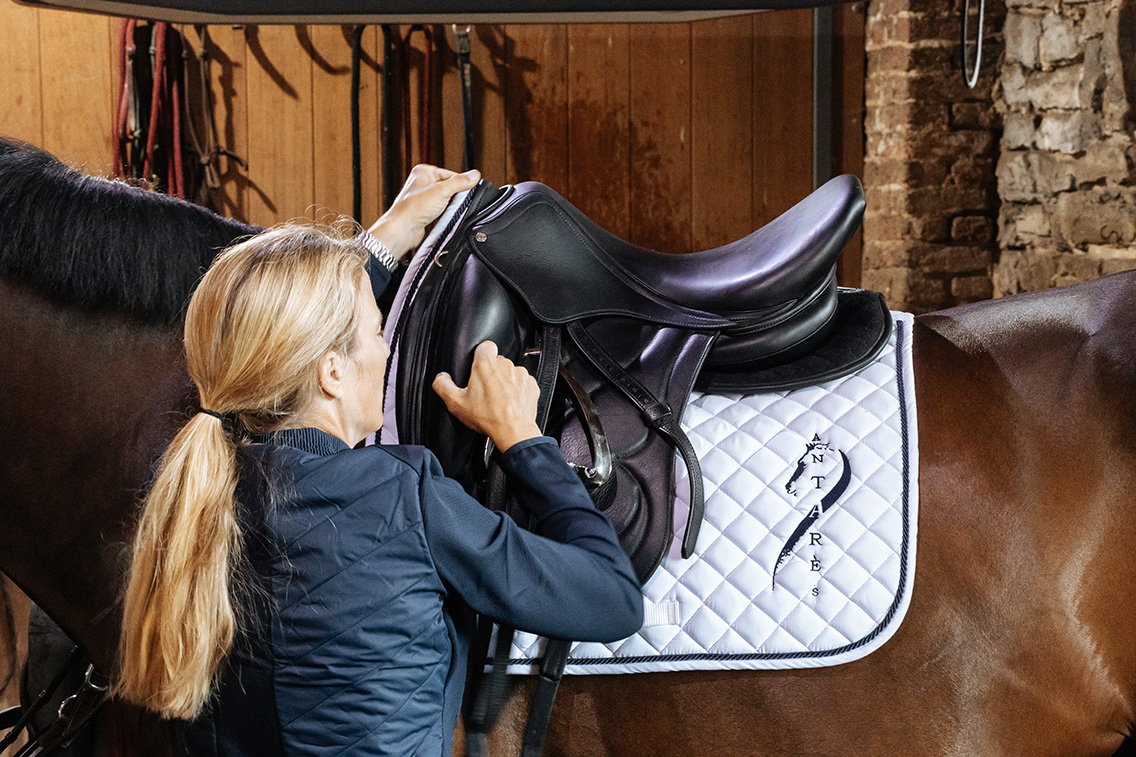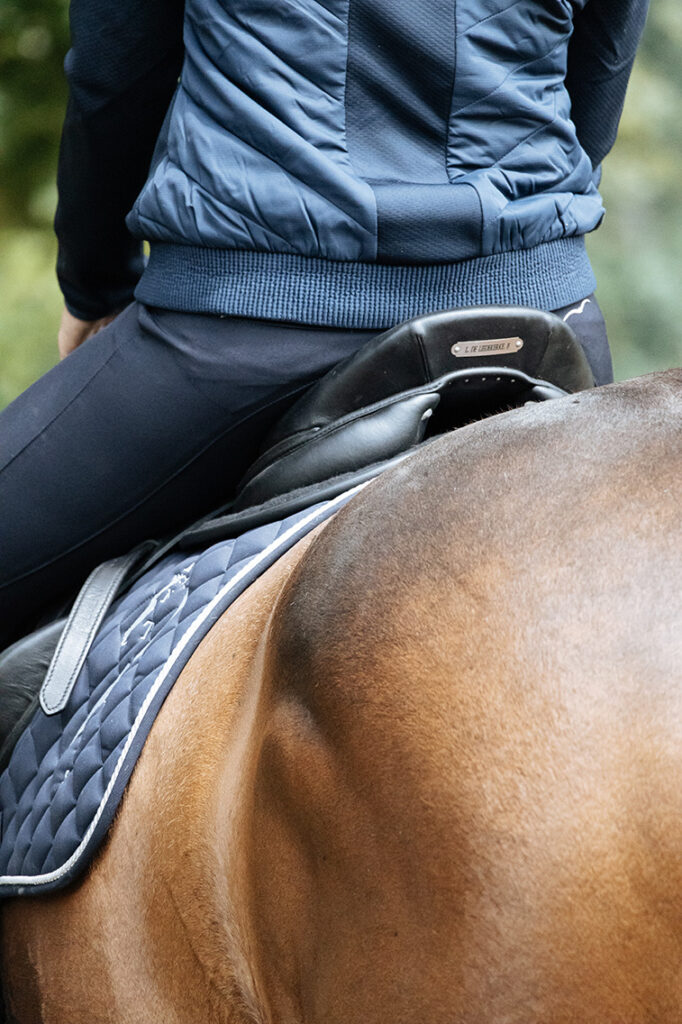Advice
How to properly position your riding saddle on your horse’s back
4 September 2023

Advice
4 September 2023

Every detail matters when it comes to ensuring the health, comfort, and performance of your horse. For your horse’s well-being during work, the correct positioning of the saddle on its back is one of the most essential factors. If placed incorrectly, it can cause harm, hinder your horse’s movement, and create pressure on sensitive areas of its back. It also affects your position as a rider.
Apart from comfort, proper saddle positioning helps maintain your horse’s muscular and joint longevity, thereby ensuring its performance. That’s why all our experts are trained in saddle fitting in collaboration with equine health professionals.
Feeling like your saddle is slipping back? Perhaps it’s simply too far forward and returning to its initial position. But how can you be sure? In this article, we provide you with all our advice to ensure your saddle is properly positioned on your horse’s back.

The saddle must be placed between the 8th and 18th thoracic vertebrae of the horse.
If your saddle is in front of the 8th vertebra, it’s too far forward. When your horse moves, its scapula moves back and forth by 4 to 5 centimeters. A saddle too far forward restricts the movement of the front end, limiting your horse’s mobility and bounce. This also applies to jumping. A poorly placed saddle prevents it from raising its withers and using its shoulders to clear obstacles.
If it extends beyond the 18th vertebra, it’s too far back or too long for your horse. The rider’s weight is then shifted onto the horse’s loins.
The rider’s center of gravity should be on the deepest part of the saddle, ideally at the 13th vertebra of the horse.

If you need to (re)familiarize yourself with the horse’s back anatomy, we have described it in detail in the article “3 tips to prevent your horse from getting back pain” in collaboration with the specialized osteopathy school EOS Animal.
The 8th thoracic vertebra is located 2 fingers behind the horse’s scapula. Identify this point, then move up to your horse’s back.
To identify the 18th vertebra (the last thoracic one), run your hand along your horse’s ribs. When you reach the last rib, follow the curve of this last vertebra without moving in a straight line.

The saddle tree attachment points (located above the front panel) should align with the 8th thoracic vertebra, which, as a reminder, is situated 2 to 3 fingers behind the scapula. This way, the saddle doesn’t interfere with the movement of the shoulder and doesn’t create any pressure points.
The gullet’s opening and shape should be adapted to your horse. Your saddle should never come into contact with your horse’s withers. You should be able to pass 2 to 3 fingers under the pommel, depending on your horse’s morphology. If this is not possible, the saddle’s gullet is too wide.
The saddle must sit perfectly level on your horse’s back. The panels should conform to the horse’s back uniformly without touching the spine.
When the saddle is well-balanced on the horse’s back, the rider’s weight is better distributed, and pressure points are avoided.
To judge the proper balance of your saddle, place it without a pad and tighten the girth normally. Your saddle will settle onto your horse and take its place. Also, step back a few paces to help you evaluate the saddle’s position and balance.
Note that new panels may not yet conform to your horse’s back shape and may initially appear slightly “high.”

The shim pad can address saddle balance issues. By adding shims to the front or back, it compensates for the imbalance and prevents rocking.
It’s essential to regularly check the condition of your saddle. The tree, the skeleton of the saddle, must be intact. Its role is to distribute the rider’s weight evenly on the horse’s back. Besides being the right size in terms of length, width, arch, and tree attachment point, it is crucial that it’s in good condition. If you have any doubts, contact one of our experts.